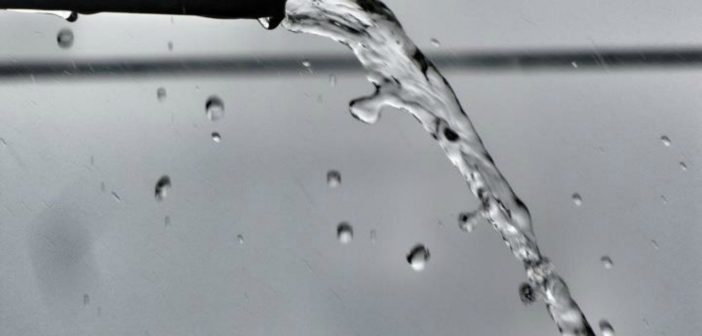It’s no secret that homeowners need to care for their homes regularly. One crucial task is examining the outside drains. Though it might seem like a nuisance, it’s vital to inspect your drains to ensure they’re clear of debris and surface water.
We’ll examine what homeowners should do if they find surface water in their outside drain, how households can prevent it, and how to take better care of their property.
What is an outside drain, and what does it do?
Most homes have an outside drain located near the foundation. Its purpose is to direct water away from your home and prevent flooding. Without it, surface water would pool around your home’s foundation and drains, causing severe damage.
Outside drains safeguard your house
An outside drain is an essential part of your home’s drainage system. It helps to direct water away from your home and prevents flooding, but a blocked drain or blocked drainage system prevents this.
Water in outside drain: is the drain blocked?
If you see water in your outside drain, you have a clogged or blocked drain. This blockage could be caused by leaves, soil, dirt, grease, mud, twigs, or other debris accumulated in the drain.
Look out for debris near drains
As water cannot flow through the drainage, it backs up and pools around your home’s foundation. In addition to being unsightly, this can lead to severe structural damage to your home and sewage system.
Why is water in an outside drain a problem?
Water in an outside drain is a problem because it can seriously damage your home. When water pools around your home’s foundation, it can cause cracks or even collapse. In addition, the build-up of water in the drain can create a breeding ground for bacteria, which can lead to an unpleasant smell.
Check outside kitchen drain for debris and blocked pipes
You might also suffer problems trying to flush a bathroom toilet or experience nasty smells from a kitchen sink or pipe.
How can you tell if there’s water in the outside drain?
The easiest way to tell if your outside drain is blocked is by examining it for water. If you see any water pooling around the drain, it’s a sure sign that the drain is blocked. In addition, you may also notice foul smells coming from the drain. This is due to debris and water in the drain, which can create a breeding ground for bacteria.
A drain holding water or with water overflowing is a telltale sign of a blockage.
Take care with the drain cover
If there is a drain cover in place, safely remove this, and if you need assistance with this, do so. If you damage the drain cover, you will cause greater problems, and might have to pay a lot of money to fix it. Dealing with blocked drains is one thing, but a broken drain cover is also problematic.
How can you prevent water from gathering in a blocked outside drain?
The best way to prevent water gathering in a blocked external drain is by regularly cleaning the drain, a pressure hose is suitable. In addition, you should also make sure that no trees or shrubs are growing near the drain. These can shed leaves or branches that can block the drain.
How to unblock an outside drain
If you see water outside the drain, you should first try to unblock an outside drain. People can do this by using a plunger, a drain rod, a drain pipe, a plumber’s auger or a plumber’s snake. Wear protective gloves and protective clothing when working with caustic soda or baking soda to clear a blockage. You don’t want to get your hands dirty or have too much contact with substances like caustic soda.
If you cannot unblock an outside drain, you should contact a professional plumber before you make the problem worse.
Drain rods are highly effective in clearing blocked drains
A professional plumber has access to professional drain cleaning tools, and will be confident in the use of drain rods. They will be able to safely and effectively remove the blockage and prevent water from pooling around your home’s foundation.
You might be able to remove some blockages in a blocked drain manually, but professional tools like a drain rod speed up the job.
Are there any steps homeowners can take to keep their drainage system clear and prevent blockages?
Tips to consider include:
- Remove outdoor debris – using a pressure hose or garden hose is fine
- Apply waterproof sealant around the home
- Review the placing of downspouts
- Ensure your home drainage system, including bathroom and kitchen drains, are not blocked
- Review inside and outside pipes
- Check the flush of your toilet, making sure it’s not blocked
- Reviewing drainage problems inside and outside of your home is helpful
- You can use caustic soda to remove blockages and unblock a sink or pipes at home
Try to not pour boiling water down the drain. You shouldn’t pour boiling water down a kitchen drain or bathroom sink to unblock it, because it causes long-term issues. The same is true for an external drain chamber or pipes, even if they are more robust than a standard kitchen drain.
If in doubt, refer to your local water company, and they’ll advise on who is responsible for the sewer network, and how it should be managed.
What are some of the most common causes of blockages and clogged outside drains during the winter?
Knowing the common causes that block internal drains help you unblock drains and prevent future blockages. Common causes of a sewage drain or external drain blockage include:
- Debris, such as soil, mud, grease, dirt, twigs and leaves and other outdoor debris
- Freezing temperatures impacting standing water
- Salt used to melt ice
Follow the steps outlined in this guide to unblock a drain, and prevent wastewater overflowing outside your house or driveway. You can always hire a professional to unblock a drain but if you know what you’re doing, it isn’t a difficult job.




